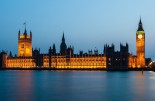MUFG: Bank of England decides against back-to-back 50bps hikes
MUFG: Bank of England decides against back-to-back 50bps hikes

The BoE has decided to slowdown the pace of rate hikes at today’s MPC meeting when it raised the policy rate by a further 25bps to 5.25%. While it was in line with our own expectations, the decision has disappointed some market participants and UK economists who had been calling for larger back-to-back 50bps hikes following on from the 50bps hike delivered in June.
Ahead of today’s meeting we had highlighted that the UK rate market had been pricing in around 34bps of hike for today’s MPC meeting, and 16 out of the 61 UK economists polled by Bloomberg were expecting another 50bps hike today. The vote split for today’s policy decision revealed a more divided MPC. There was a three-way split with 6 MPC members including Governor Bailey and Chief Economist Huw Pill voting for a more normal 25bps hike, while 2 MPC members (Jonathan Haskel & Catherine Mann) voted for a larger 50bps hike and 1 MPC member (Swati Dhingra) voted to leave rates on hold. The vote split did though reveal that there was a strong consensus view amongst the MPC to deliver a 25bps rather a 50bps hike today.
The decision to hike rates today by a further 25bps was in response to some key indicators including wage growth that had surprised significantly to the upside. The BoE indicated that this could indicate that the “medium-term equilibrium rate of unemployment had risen, and that some of the risks of greater persistence in broader domestic inflationary pressures had crystallized”. The BoE added that the UK economy had shown surprising resilience over a number of quarters, and it was too early to conclude that the economy was at or very close to a significant turning point. So even though there was evidence that the BoE’s tighter policy stance was weighing on economic activity, the BoE judged that another 25bps hike was required to address the risks from greater inflation persistence.
The BoE has incorporated market expectations for a much higher policy rate into their updated economic projections. Based on the assumption that the policy rate moves closer to 6.0% and stays at higher levels (>5.0%) in the coming years, the BoE now expects the UK economy to expand even more slowing in the May projections.
GDP growth is expected to remain weak at 0.5% in 2023 and 2024 before slowing further to just 0.25% in 2025 which outlines a more pessimistic outlook for the UK economy even as the negative shock from the cost of living crisis eases.
In light of the weaker growth outlook, the BoE expects an increasing degree of economic slack to emerge after the middle of next year and for the unemployment rate to rise to just under 5% by Q3 2026. Aggregate supply capacity and unemployment are now expected to be somewhat higher than forecast back in the May MPR.
The developments should help to bring inflation back to the BoE’s inflation target over the forecast period. A scenario that the BoE’s mean CPI forecasts envisage (set at 2.0% and 1.9% respectively at the two and three year horizons) after incorporating upside inflation risks.
The overall policy message from the BoE today remained relatively hawkish in comparison to the policy updates from the ECB and Fed. The BoE did not go as far by signalling that their rate hike cycle is close to an end, and left the door open to further hikes similar to the message at previous MPC meetings.
The updated forward guidance continued to reiterate that 'if there were to be evidence of more persistent inflation pressures, then further tightening in monetary policy would be required'. The BoE has indicated that it will continue to watch closely indications of persistently inflationary pressures and the resilience of the UK economy as a whole, including the tightness of labour market conditions and the behaviour of wage growth and services price inflation.
In addition, the BoE added that it now judges the current policy stance as restrictive, and will ensure that the Bank Rate was 'sufficiently restrictive for sufficiently long' to return inflation to the 2.0% target sustainably in the medium-term. Unlike the ECB, the BoE did not signal that the current Bank Rate was now judged to be at sufficiently restrictive.
In light of these developments, we are sticking to our forecast for one final 25bps hike in September that would lift the policy rate to a peak of 5.50%. We are assuming that there will be more evidence of slowing inflation and weaker growth by later this year so that the BoE does not hike again in November or December.
Market Implications
The pound has reacted negatively to today’s BoE policy update resulting in cable falling to fresh low of 1.2621, and EUR/GBP has risen up to a high of 0.8656. It mainly reflects some disappointment that the BoE delivered a smaller 25bps hike rather than another 50bps hike.
As we highlighted above the UK rate market was pricing in around 34bps of hikes prior to today’s MPC meeting. Market participants have also become a little less confident that the BoE will continue hiking rates. The UK rate market is currently pricing in around 15bps of hikes for the November MPC meeting and around 47bps of hikes by early next year for an expected terminal policy rate of 5.75%.
Current market pricing appears more reasonable in comparison to when it was pricing in a peak of around 6.5% in early July. For the UK rate market to further scale back expectations for BoE hikes, it will require more evidence of slowing inflation and/or weaker growth in the 2H of this year.
The main downside risk for the pound in the near-term that could extend the sell-off further would if risk-off trading conditions triggered by the US credit downgrade and ongoing move higher in long-term bond yields were to intensify over the summer period.










